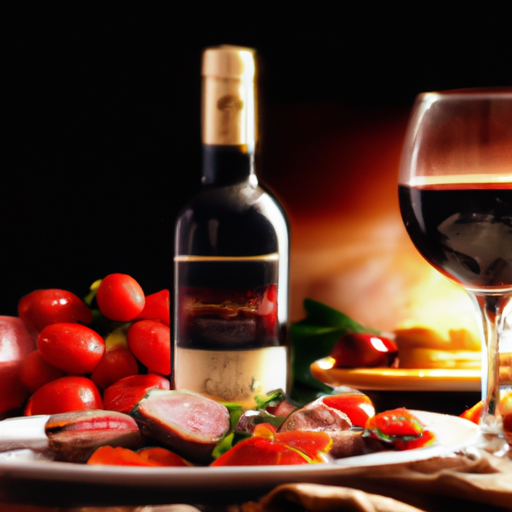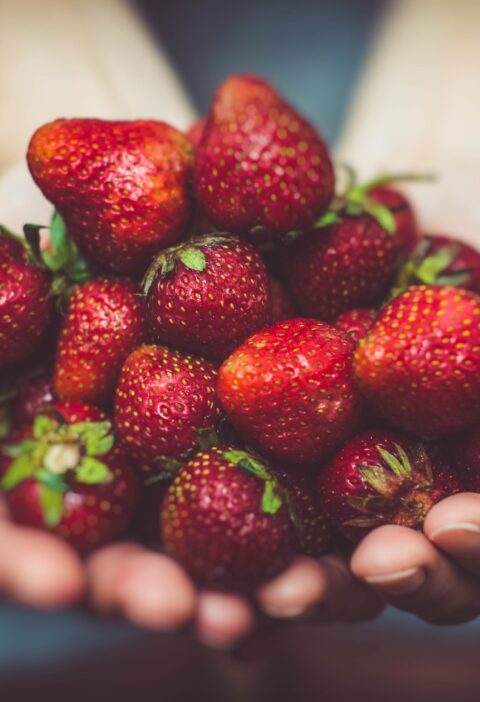Have you ever wondered which wine pairs best with your favorite dishes? Well, wonder no more because in this article, we will be diving into the realm of food and wine pairing. Whether you’re hosting a dinner party or simply enjoying a meal at home, knowing the right wine to complement your food can elevate your dining experience to a whole new level. So, grab a glass of wine, sit back, and get ready to discover the fascinating world of food and wine pairing.
In this article, we will explore the principles and techniques of food and wine pairing, as well as some classic combinations that are sure to impress your taste buds. From bold reds to crisp whites, we’ll guide you through the various types of wines and their ideal food pairings. Whether you’re a wine connoisseur or just starting your journey into the world of wine, this guide will provide you with valuable insights that will enhance your appreciation for both food and wine. So, get ready to take your culinary adventures to the next level as we explore the art of food and wine pairing in depth.
Food and Wine Pairing Guide
Whether you are hosting a dinner party, going out for a meal, or simply enjoying a glass of wine at home, understanding how to pair food and wine can greatly enhance your dining experience. The right combination of flavors and textures can elevate your meal to new heights, creating a harmonious balance that pleases both the palate and the senses. In this guide, we will explore the principles behind food and wine pairing, as well as provide specific recommendations for pairing wine with different types of food, ethnic cuisines, and even debunk some common pairing myths.
Matching Flavors and Textures
One of the fundamental aspects of food and wine pairing is matching flavors and textures. When combining wine and food, you want to find complementary elements that enhance each other. For example, if you are serving a rich and juicy steak, a full-bodied red wine like Cabernet Sauvignon or Malbec would be an excellent choice. The robust flavors and tannins of the wine will complement the hearty nature of the meat, creating a balanced and enjoyable pairing.
On the other hand, if you are preparing a light and delicate seafood dish, a crisp and refreshing white wine, such as Sauvignon Blanc or Pinot Grigio, would be a better match. The acidity and citrusy notes in these wines can cut through the richness of the seafood, enhancing the flavors and providing a refreshing contrast.
Complementing or Contrasting
When it comes to food and wine pairing, you have the option to either complement or contrast the flavors. Complementary pairings are based on similarities, where the wine and food share similar characteristics. For example, pairing a creamy pasta dish with a buttery Chardonnay can create a harmonious combination of creamy flavors.
On the other hand, contrasting pairings bring together elements that are different from each other. This can create a unique and exciting dining experience. For example, pairing a spicy Indian curry with a slightly sweet Riesling can balance the heat of the dish and create a pleasant contrast on the palate.
Considerations for Red Wines
Red wines offer a wide range of pairing possibilities due to their complex flavors and tannins. When choosing a red wine to pair with food, consider the level of tannins and the weight of the wine. Tannins are compounds found in red wines that can create a drying sensation in your mouth. They pair well with fatty and rich foods, as they help cleanse the palate. Consider the following guidelines when selecting a red wine for your meal:
- Light-bodied red wines, such as Pinot Noir or Beaujolais, pair well with lighter dishes like roasted chicken or grilled vegetables.
- Medium-bodied red wines, like Merlot or Sangiovese, can pair nicely with a wide range of foods, including pasta dishes, lamb, and roasted pork.
- Full-bodied red wines, like Cabernet Sauvignon or Syrah, are better suited for bold and flavorful dishes like steak, game meats, or dishes with heavy sauces.

Considerations for White Wines
White wines are known for their crispness, acidity, and refreshing nature. They can be a great match for a variety of foods, especially those that are lighter in flavor. Consider the following guidelines when pairing white wines:
- Dry white wines, such as Sauvignon Blanc or Chablis, pair well with lighter dishes like seafood, salads, and goat cheese.
- Off-dry white wines, like Riesling or Chenin Blanc, can complement spicier dishes, as the slight sweetness can balance the heat.
- Rich and buttery white wines, like Chardonnay or Viognier, pair well with creamy or buttery dishes, such as lobster or creamy pasta sauces.
Pairing Wine with Different Types of Food
Now that we have covered the basics of food and wine pairing, let’s explore specific recommendations for pairing wine with different types of food.
Pairing Wine with Meats
When it comes to pairing wine with meats, the general rule of thumb is to match the intensity of the wine with the intensity of the dish. Here are some classic pairings:
- Red meat: Pair rich and flavorful red wines like Cabernet Sauvignon, Syrah, or Malbec with steaks, roasts, and game meats.
- Poultry: Lighter meats like chicken or turkey pair well with medium-bodied red wines like Pinot Noir or Merlot, as well as medium to full-bodied white wines like Chardonnay or Viognier.
- Pork: Depending on the preparation and seasoning, both red and white wines can work well with pork dishes. For grilled pork or pork chops, try a medium-bodied red wine like Tempranillo or a rich white wine like Gewurztraminer. For roasted pork with herbs or spices, a lighter red or a medium-bodied white wine can be a good match.
Pairing Wine with Seafood
Seafood can be a versatile and delicate ingredient to pair with wine. The key is to consider the preparation and flavors of the dish. Here are some popular seafood pairings:
- White fish: Light and delicate white fish like cod or sole pair well with light and crisp white wines like Sauvignon Blanc or Pinot Grigio.
- Shellfish: Whether it’s shrimp, lobster, or scallops, shellfish can be paired with a range of white wines, such as Chardonnay, Riesling, or even a sparkling wine like Champagne or Prosecco.
- Salmon: Depending on the preparation, salmon can pair well with both white and red wines. Grilled or poached salmon can work well with medium-bodied white wines like Chardonnay or Pinot Noir, while richer preparations like glazed or smoked salmon can stand up to a medium-bodied red wine like Merlot or a light-bodied, fruity red like Beaujolais.
Pairing Wine with Vegetables and Salads
Vegetables and salads can present unique challenges when it comes to pairing wine, as their flavors and textures can vary greatly. Here are some recommendations for pairing wine with vegetables and salads:
- Light and fresh salads: Pair crisp and refreshing white wines like Sauvignon Blanc or Pinot Grigio with salads that feature lighter greens and vinaigrette dressings.
- Sweet and earthy vegetables: Root vegetables like sweet potatoes or beets can pair well with medium-bodied red wines like Merlot or Syrah, as well as earthy white wines like Viognier or Grüner Veltliner.
- Grilled or roasted vegetables: For grilled or roasted vegetables with a more intense flavor, try a medium-bodied red like Tempranillo or a full-bodied white like Chardonnay to complement the smoky flavors.
Pairing Wine with Cheese and Charcuterie
Cheese and charcuterie boards are a popular choice for wine lovers, as they provide a wide range of flavors and textures to play with. Here are some general guidelines for pairing wine with cheese and charcuterie:
- Soft and creamy cheeses: Pair soft and creamy cheeses like Brie or Camembert with rich and buttery white wines like Chardonnay or Champagne.
- Aged and hard cheeses: Aged and hard cheeses like Parmesan or aged Cheddar can be paired with medium to full-bodied red wines like Cabernet Sauvignon or Tempranillo.
- Blue cheeses: The salty and pungent flavors of blue cheeses pair nicely with sweet white wines like Sauternes or Port.
Pairing Wine with Ethnic Cuisines
Exploring different ethnic cuisines can be an exciting adventure for both your taste buds and your wine pairing skills. Here are some recommendations for pairing wine with a few popular ethnic cuisines:
Pairing Wine with Italian Cuisine
Italian cuisine is known for its emphasis on fresh ingredients and simple yet flavorful preparations. Here are some classic Italian dishes and their wine pairings:
- Pizza and pasta with tomato-based sauces: Pair these dishes with medium-bodied red wines like Chianti or Sangiovese, as they can stand up to the acidity of the tomatoes.
- Risotto and creamy pasta dishes: Opt for white wines with a bit of richness and body, like a Chardonnay or a Pinot Grigio with some age.
- Prosciutto and melon: This classic appetizer pairs well with a refreshing and slightly fruity white wine like Pinot Grigio or Vermentino.
Pairing Wine with French Cuisine
French cuisine is known for its elegance and intricate flavors. Here are some classic French dishes and their wine pairings:
- Coq au Vin: This rich and flavorful chicken dish pairs well with a medium to full-bodied red wine like Burgundy or Bordeaux.
- French onion soup: The savory and sweet flavors of this soup can be complemented by a white wine with good acidity, such as a Sancerre or a Chablis.
- Cheese plate: French cheeses like Brie or Roquefort can be paired with a wide range of French wines, such as Champagne, Sauternes, or a red Bordeaux.
Pairing Wine with Asian Cuisine
Asian cuisines offer a wide variety of flavors, from spicy to sweet, and everything in between. Here are some general guidelines for pairing wine with Asian cuisine:
- Chinese cuisine: Pair light and delicate dishes like steamed dumplings or stir-fried vegetables with a crisp and refreshing white wine like Sauvignon Blanc or Riesling.
- Thai cuisine: Thai dishes can be spicy and aromatic, making them a good match for off-dry white wines like Gewurztraminer or a fruity red wine like Beaujolais.
- Japanese cuisine: Sushi and sashimi can be paired with a range of wines, including light and crisp whites like Sauvignon Blanc or Champagne, as well as light-bodied reds like Pinot Noir or Beaujolais.
Pairing Wine with Mexican Cuisine
Mexican cuisine is known for its bold flavors and spices. Here are some recommendations for pairing wine with Mexican dishes:
- Tacos and enchiladas: Pair these flavorful dishes with medium-bodied red wines like Tempranillo or a spicy Zinfandel. For white wine lovers, a crisp and fruity white like a Verdejo can also work well.
- Guacamole and salsa: The creamy and tangy flavors of guacamole and salsa can be complemented by a white wine with good acidity, like a Sauvignon Blanc or a Verdejo.
- Mole dishes: Mole dishes can be complex and rich in flavors. Pair them with a medium to full-bodied red wine like a Syrah or a Zinfandel, as these wines can stand up to the intensity of the dish.

Understanding Wine Characteristics
To truly master the art of food and wine pairing, it’s important to have a basic understanding of wine characteristics. Here are some key elements to consider:
Body and Tannins
The body of a wine refers to its weight and texture on the palate. Light-bodied wines are typically more delicate and have fewer tannins, while full-bodied wines are more robust and have more tannins. Tannins are compounds that come from the grape skins and can create a drying sensation in your mouth. They are more prevalent in red wines and can help cleanse the palate when paired with fatty or rich foods.
Acidity and Sweetness
Acidity is an important component of wine, as it provides freshness and structure. High acidity wines can cut through rich and fatty foods, balancing the flavors on your palate. Sweetness, on the other hand, can complement spicy or sweet dishes, providing a pleasant contrast.
Dry vs. Sweet Wines
Dry wines are those that have no residual sugar, while sweet wines have varying levels of sweetness. When pairing wine with food, it’s important to consider whether you want a dry or sweet wine to complement the flavors of your dish. Dry wines are more versatile and can pair well with a wide range of foods, while sweet wines can create a delightful contrast with spicy or dessert dishes.
Understanding Aromas and Bouquet
The aromas and bouquet of a wine play an important role in its overall flavor profile. The aromas are the scents that you perceive when you smell the wine, while the bouquet refers to the complex range of aromas that develop as the wine ages. When pairing wine with food, the aromas can either complement or contrast with the flavors of the dish, enhancing the overall dining experience.
Choosing the Right Glassware
While it may seem like a minor detail, choosing the right glassware can greatly impact your enjoyment of both food and wine. Here are some considerations when selecting wine glasses:
The Impact of Glass Shape
The shape of the wine glass can enhance or diminish the aromas and flavors of the wine. For example, a glass with a wider bowl can enhance the aromas and allow the wine to breathe, while a narrower glass can help concentrate the aromas and flavors.
The Role of Stemware
Stemware refers to the stem and base of the wine glass. Drinking wine from a glass with a stem allows you to hold the glass without warming the wine with your body heat. This is especially important for white and sparkling wines, which are typically served at lower temperatures.
Choosing Wine Glasses for Red Wines
For red wines, choose glasses with larger bowls to allow the wine to breathe and release its aromas. The wider surface area also allows for better oxygenation, which can soften the tannins in the wine. Additionally, red wine glasses should have a tapered rim to concentrate the aromas towards your nose.
Choosing Wine Glasses for White Wines
For white wines, opt for glasses with slightly smaller bowls to help maintain the cooler temperature of the wine. White wine glasses should have a narrower rim to focus the aromas towards your nose, enhancing the overall tasting experience.
Temperature and Serving Suggestions
The temperature at which wine is served can greatly impact its taste and aroma. Here are some general guidelines for serving wine:
The Influence of Temperature
- White wines: Serve white wines chilled at around 45-50°F (7-10°C) to preserve their freshness and acidity.
- Red wines: Serve red wines at a slightly cooler room temperature, around 60-65°F (15-18°C), to enhance their aromas and soften their tannins.
- Sparkling wines: Serve sparkling wines well-chilled at around 40-45°F (4-7°C) to preserve their effervescence and crispness.
Decanting and Aeration
Decanting is the process of transferring wine from the bottle into a decanter before serving. This can help separate any sediment that may have formed in the bottle and allow the wine to breathe, enhancing its aromas and flavors. Red wines, especially older and full-bodied ones, can benefit from this process. Aeration, on the other hand, involves swirling the wine in the glass to introduce oxygen, which can help soften the tannins and release the aromas.
Serving Wine with Food
When serving wine with food, it’s important to consider the sequence and order of the dishes. As a general guideline:
- Serve lighter wines and appetizers before the main course to awaken the palate.
- Pair more robust and full-bodied wines with heavier and richer dishes.
- Consider matching the intensity of the wine with the intensity of the dish to create a balanced pairing experience.
Proper Wine Storage
To ensure that your wine is in optimal condition for serving, it’s important to store it properly. Here are some tips for wine storage:
- Store wine in a cool and dark place to prevent heat and light exposure, which can degrade the wine.
- Lay bottles of wine on their side to keep the cork moist and prevent it from drying out, which can cause oxidation.
- Avoid storing wine in areas with strong odors, as wine is porous and can absorb smells.
Exploring Food and Wine Pairing Techniques
Though there are some guidelines to follow when pairing food and wine, it’s also fun to explore different techniques and experiment with your personal preferences. Here are some techniques to consider:
Comparative Tasting
Comparative tasting involves tasting multiple wines side by side with the same food to compare and contrast their flavors. This technique allows you to understand how different wines can enhance or detract from the flavors of a specific dish.
Experimenting with Balance
Experimenting with balance involves intentionally pairing wines that have contrasting characteristics with the food to create a unique and unexpected pairing. For example, pairing a rich and buttery Chardonnay with a spicy Thai curry can create an interesting balance of flavors.
Regional Pairing Tradition
Regional pairing traditions can offer valuable insights into tried-and-true combinations. For example, in Italy, it is common to pair a Barolo with braised meats, as the rich and robust flavors of the wine complement the hearty nature of the dish.
Using Wine with Cooking
Wine can also be used as an ingredient in cooking to enhance the flavors of a dish. It can add depth and complexity to sauces, marinades, or even desserts. When cooking with wine, choose a wine that you would also enjoy drinking, as the flavors will be concentrated in the final dish.
Debunking Food and Wine Pairing Myths
There are many myths and preconceived notions when it comes to food and wine pairing. Let’s take a moment to debunk some of the common ones:
White Wine with Fish, Red with Meat
While white wine pairs well with many fish dishes, it’s not a hard and fast rule. Certain meat dishes can be beautifully complemented by white wine, such as roasted chicken with a rich and buttery Chardonnay. Similarly, light-bodied red wines can pair nicely with some fish dishes, like grilled salmon with Pinot Noir.
Only Expensive Wines Pair Well
Price does not always determine the quality or the pairing potential of a wine. There are plenty of affordable wines that can offer excellent flavor profiles and pairing opportunities. It’s more important to consider the characteristics of the wine and how they complement the flavors of your food.
Pairing Wine with Spicy Food
Contrary to popular belief, spicy food can be paired with wine. The key is to choose wines with lower levels of alcohol and higher levels of residual sugar, as these can help balance the heat. Off-dry white wines like Riesling or Gewurztraminer can be great choices for spicy dishes.
Restrictive Pairing Rules
While there are guidelines to help you make informed choices, food and wine pairing is ultimately a matter of personal preference. Feel free to experiment, try different combinations, and trust your own palate. What matters most is finding combinations that please you and enhance your dining experience.
Personalizing Your Food and Wine Pairing Experience
To truly make the most of your food and wine pairing experience, it’s important to understand your own taste preferences and explore new combinations. Here are some ways to personalize your pairing journey:
Understanding Your Taste Preferences
Take the time to explore different wines and identify the flavors and characteristics that you enjoy. This will help guide your choices when it comes to pairing food and wine.
Exploring New Pairings
Don’t be afraid to step out of your comfort zone and try new pairings. The world of food and wine offers endless possibilities, and you might discover a combination that becomes your new favorite.
Keeping a Pairing Journal
Keep a record of the pairings you try, noting the wines, foods, and your impressions. This can be a helpful reference to look back on and can also serve as a guide for future pairings.
Seeking Expert Advice
If you’re feeling overwhelmed or want some additional guidance, don’t hesitate to seek advice from wine professionals or sommeliers. They can offer insights and recommendations based on their expertise and knowledge.
Conclusion
Pairing food and wine is an art that can greatly enhance your dining experience. By understanding the principles behind food and wine pairing, as well as considering the characteristics of different wines and types of food, you can create harmonious combinations that elevate your meals to new heights. Whether you’re hosting a dinner party or enjoying a relaxing evening at home, let your taste buds be your guide and explore the wonderful world of food and wine pairing. Cheers!





